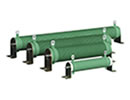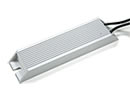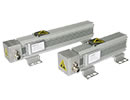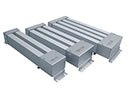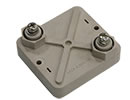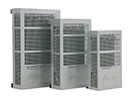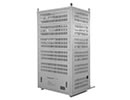- Laminated Busbar
- Film Capacitor
- Film Capacitor for HEV / EV Motor Control Unit
- DC-Link Capacitor ( Dry-Type, Plastic Case, Maximum Temperature 85℃)
- DC-Link Capacitor ( Dry-Type, Plastic Case, Maximum Temperature 105℃)
- MKP DC-Link Film Capacitor
- Water Cooled Heat Sink
- Flat Heat Pipe
- Reactor
- Water Cooling Reactor
- Input AC Reactor
- Output AC Reactor
- DC Reactor
- Reactor for Explosion-Proof Inverter
- Sine Wave Filter
- Detuned Reactor
- DV/DT Filters
- Three-Phase Input Filter
- Resistor
- Wirewound Resistor
- Aluminum Enclosure Resistor
- Aluminum Housed Resistor
- Die-Casting Aluminum Resistor
- Aluminium Resistor (Multiple Unit)
- Thick Film Resistor
- Braking Resistor Box
- Wirewound Tubular Fixed Resistor
- Power Resistor Unit
- Crowbar Resistor
- Braking Unit
Resistor
Resistor
A resistor is a conducting material which has a specific value of resistance. A pair of electrodes and leads is attached to it in order to facilitate the flow of current. It operates using Ohm's law whereby it produces a voltage which is proportional to the electric current.
Resistance may be explained as the ease at which an object allows the passage of electricity. Resistors therefore are meant to precisely control the amount of resistance in electric circuits thereby reducing the current by a precise amount. They can be referred to as passive electronic components because they do not require power to operate.
Working principle
When resistance is increased, less electric current is allowed to flow through the circuit. For example, volume controls used in TV sets use resistance in such a way that when reducing the volume, more resistance is created in the electric circuit that drives the speaker hence the sound goes down and vice versa.
Resistors operate according to Ohm's law which states that in electrical circuits, the current that passes through a conductor between two points is directly proportional to the voltage across the two points and inversely proportional to the resistance between them. Therefore, a resister produces a voltage which is proportional to the electric current through it across its terminals.
Categories
In general, they can be divided into two basic categories.
1. Fixed resisters have two terminals and operate in accordance to Ohm's law. These resisters are widely used in electronic circuits. The value of the resistance is fixed as it is set in the design phase of the circuit.
2. Variable resisters consist of a resistance track with two connection tags at both ends. The resistance that exists between the two tags is of a fixed value. A third tag is connected to a whiper which moves along the track towards one tag and away from the other. This mechanism controls the amount of resistance that is produced. The track may either be rotary or straight.
Resisters come in different sizes and have different colours. The colors are used to identify the type of resistor using a system whereby each color represents a certain figure.
Application
As a kind of electrical component, resistors are manufactured in different styles and different characteristics for different types of application.
Resistors can be used for accelerating, braking and speed control in electromotor. They are also widely used in appliances such as inverter, servo system, power supply, television sets, transistor radios, polygraphs, voltmeters, fuses, medical appliances, automotive applications, radiators, electric blankets, audio amplifier circuits, heaters among others.

